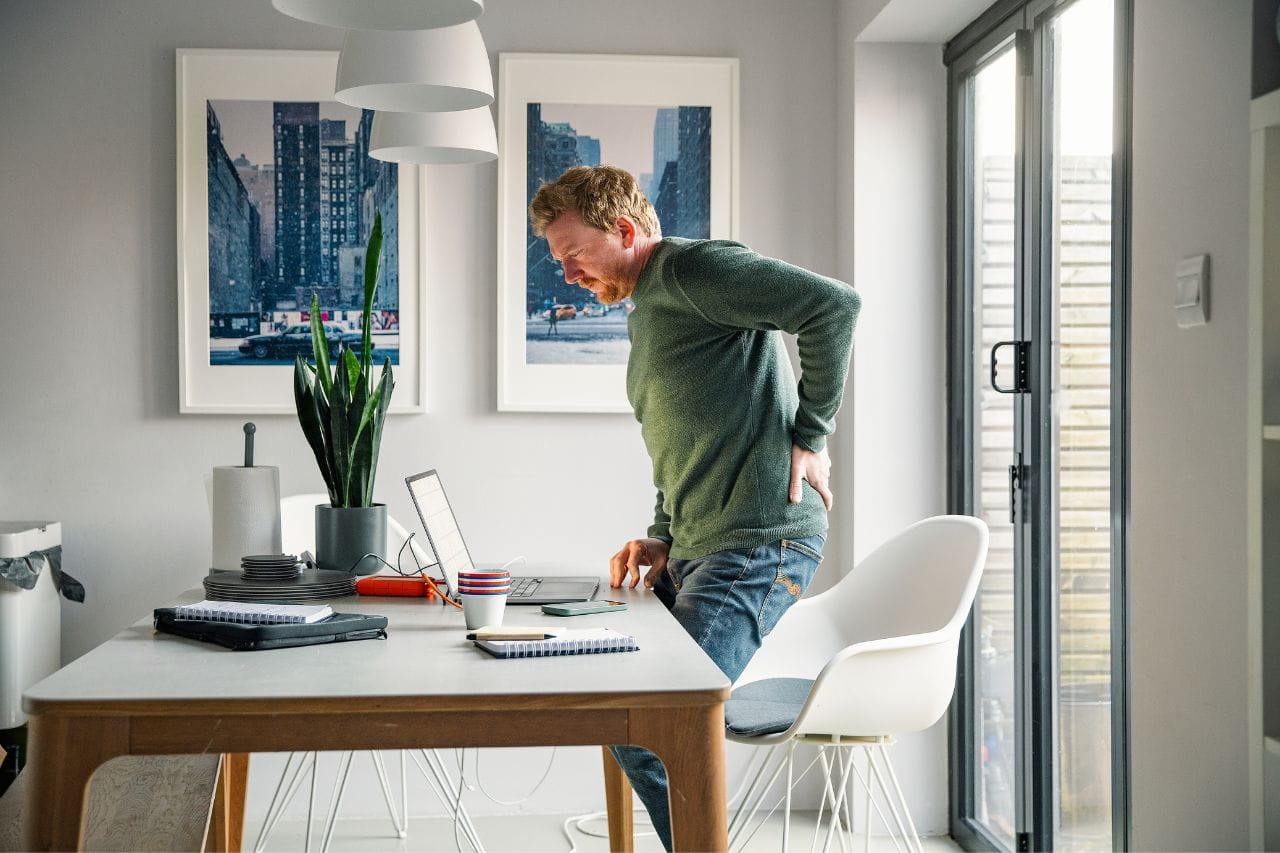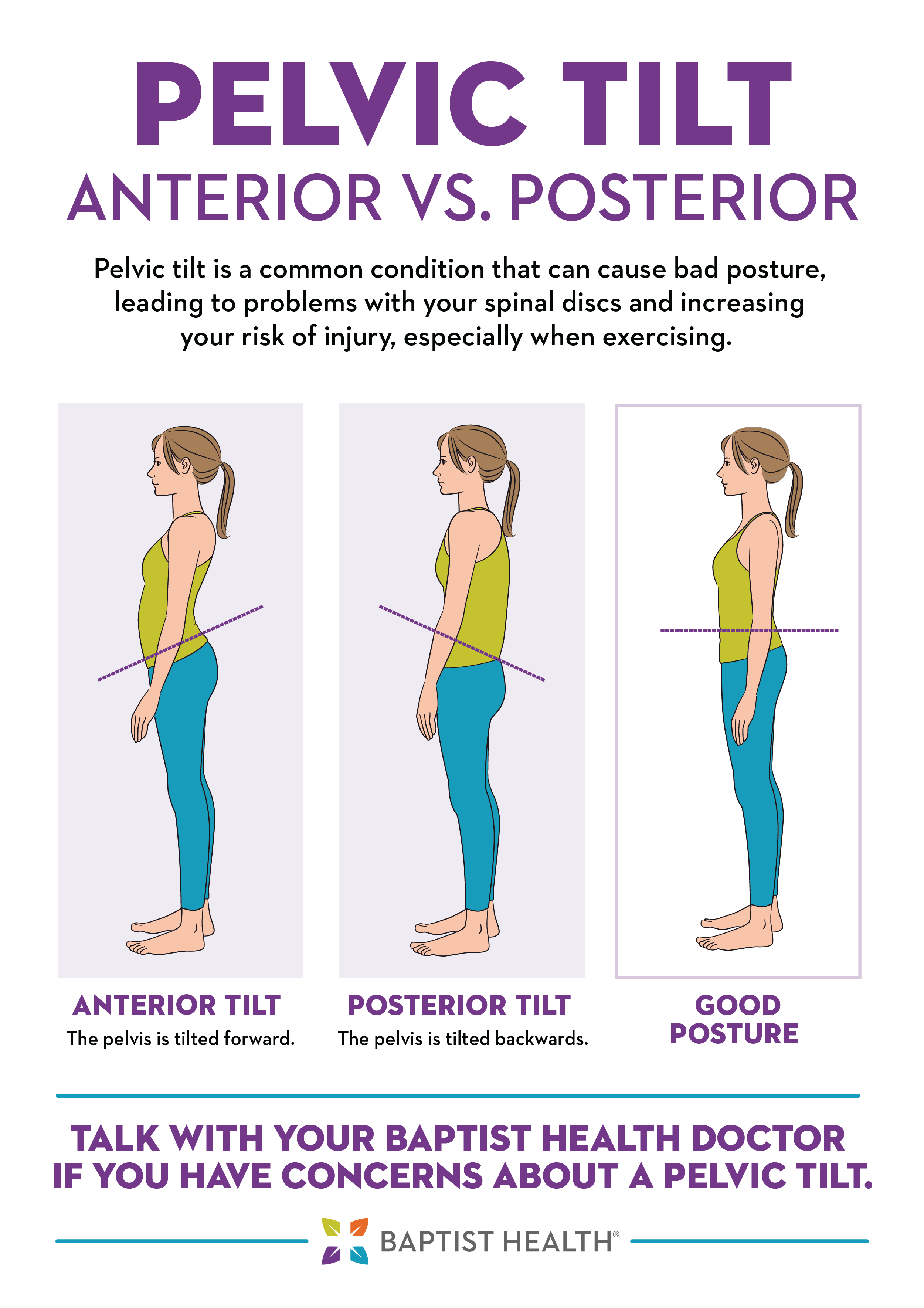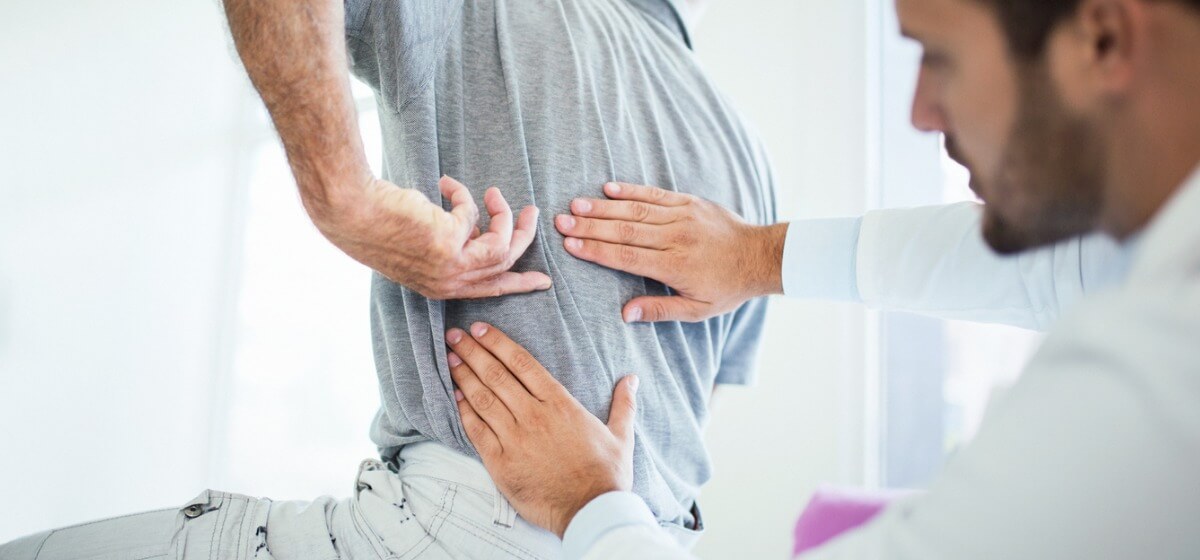Anterior Pelvic Tilt

Clinically reviewed by Joseph Silvers.
Anterior pelvic tilt is a common condition where your pelvis is rotated or tilted forward. Research suggests it affects approximately 75% of women and 85% of men. This inappropriate posture can cause various health problems.
Harmful Effects of Anterior Pelvic Tilt
If you have anterior pelvic tilt and don’t address it, the condition can cause problems that include:
- Abnormal curvature of the lower back (lordosis) and back pain, including stabbing sensations between your rib cage and pelvis
- Stomach bulge and weakened abdominal muscles
- Nonspecific pain in your groin
- Pain in your hip joints
- Overstretched hamstrings (muscles on the back of the thighs) and potential hamstring sprain
These changes can cause bad posture and increase your risk of injury, especially when exercising. It can also lead to problems with your spinal discs.
How to Tell if You Have Anterior Pelvic Tilt
Anterior pelvic tilt can have multiple causes, including spending too much time sitting, a sedentary lifestyle, and poor posture. These factors can lead to tight hip flexors pulling the pelvis down and buttocks and hamstring muscles too weak to counteract the pull.
One of the simplest ways to tell if you have anterior pelvic tilt is to wear pants with a belt and stand as you usually would near a mirror. If the belt buckle is noticeably lower than the back of the belt, you probably have this condition.
Your doctor can use handheld or caliper-based inclinometer tools to diagnose anterior pelvic tilt. They may also order X-rays to assist with their diagnosis.
Anterior vs. Posterior Pelvic Tilt
Posterior pelvic tilt is similar to anterior pelvic tilt, but the pelvis rotates or tilts back. Lengthening of the hip flexors and shortening of the hip extensors results in posterior pelvic tilt. These changes can occur because of your posture, movement habits, etc.
Like the exercises for anterior pelvic tilt (described in detail below), you can improve posterior pelvic tilt by consistently stretching and strengthening the appropriate muscles. Some of the most effective exercises are lunges, hamstring stretches, and leg raises. You can also use a foam roller to stretch shortened muscles.

How to Fix Anterior Pelvic Tilt
The good news is that you can typically address anterior pelvic tilt through exercises designed to stretch tight muscles and strengthen weak ones. As you make progress with these exercises, your pelvis naturally moves to its natural position.
Osteopathic Manipulative Treatment (OMT/OMM) performed by an Osteopathic Physician can also help to treat this condition.
Anterior Pelvic Tilt Exercises
These exercises can help to correct anterior pelvic tilt.Bridge
This exercise strengthens your hamstrings and buttocks muscles.
- Lie on your back with your arms by your side and your feet on the floor and hip-width apart.
- Press your heels into the floor and raise your pelvis until your upper body and thighs are in a straight line.
- Hold for 2 seconds, lower slowly, and repeat 8 to 12 times.
Half-kneeling hip flexor stretch
This exercise relaxes your hip flexors and increases hip flexibility.
- Put your left leg in front of you with your foot on the floor and bend your left knee until it’s at a 90-degree angle and your right knee is on the floor directly below your pelvis.
- Move your pelvis forward by tightening your abdominal and buttock muscles.
- Lean forward from your right leg until your hip flexor and inner thigh on your right leg feel tight.
- Hold for 30 seconds.
- Release and repeat up to 5 times before switching legs.
Plank
This exercise strengthens your back and stomach muscles.
- Lie face down on the floor.
- Place your hands on the floor with your palms down. Keep them directly under your shoulders.
- Tighten your stomach and thigh muscles, and slowly lift your thighs and upper body off the floor into a push-up position.
- Ensure you’re engaging your stomach muscles and that your body is straight and rigid.
- Hold the pose for as long as possible with the goal of reaching 60 seconds eventually. Gently lower your body to the floor.
Kneeling leg lift with back stretch
This exercise stretches your back and buttocks muscles and firms your abs.
- Get on your hands and knees with your hands shoulder-width apart and your hips directly over your knees.
- Your back should be parallel to the floor, keeping your pelvis in a neutral position.
- Pull your belly button toward your spine and arch your back while exhaling.
- Hold for 2 seconds.
- Bring your spine back to the neutral position.
- Extend one leg back and raise it until it reaches the same height as your body and is parallel to the floor.
- Hold for up to 5 seconds, lower the leg, and repeat up to 10 times.
- Switch legs.
Pelvic Tilt
This exercise strengthens your abs and stretches your lower back muscles.
- Lie with your back and feet flat on the floor. Your legs will be bent, and your toes will be facing forward.
- Pull your belly button toward your spine, pushing your pelvis toward the ceiling.
- Tighten your buttocks and hip muscles as you tilt your pelvis forward. Hold for 5 seconds.
- Do 5 sets of 20 repetitions.
Squats
This exercise strengthens the buttocks, quadriceps, hamstrings, and other muscles.
- Stand with your feet shoulder-width apart and your toes pointing forward.
- Look straight ahead and envision yourself taking a seat.
- Keep your abs tight as you lower yourself to a sitting position with your thighs parallel to the floor. Keep your back in a neutral position, and don’t let your knees go farther forward than your toes or rotate inward.
- Return to an upright position, moving your pelvis forward slightly by tightening your buttock muscles.
- Repeat 15 to 20 times.
Get Help with Orthopedic Issues from Baptist Health
Anterior pelvic tilt is a common problem that can cause pain, disc problems, and other issues if you don’t address it. Typically, you can prevent it by being active and maintaining good posture, and you can resolve it with targeted exercises. But if you continue to have problems, Baptist Health can help!Learn about our orthopedic and sports medicine services.



